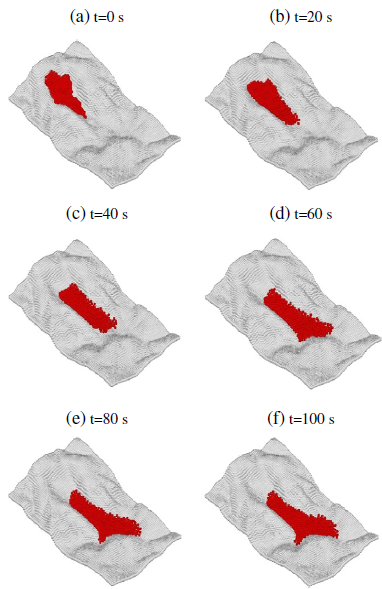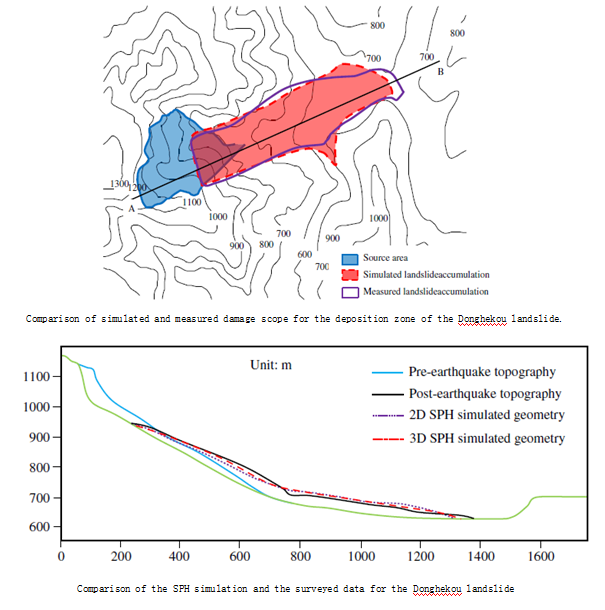Flowslide occurs when soil, clay, or rock debris behave like a liquid because of the decrease in strength during earthquakes. Such as liquefaction, debris flows, and debris avalanches and earth flow can be classified as flowslide. Flowslides have often caused more damage and casualties than the earthquake itself. However, studying such phenomena with traditional methods is made difficult by their complex fluidization characteristics.
Objective: To capture the dynamic behavior of flowslide and produce preliminary results for hazard assessment and site selection for reconstruction in earthquake-prone areas.
Approach:
Principal leader: Yu Huang
Funding: National Science Foundation
Significant Results and Potential Impact:
To overcome the limitations of traditional solid mechanics for the study of flowslide, this study presents a method based on fluid dynamics. 2D and 3D SPH simulations were conducted to predict the flow behavior of flowslide, which is assumed to be a viscous fluid. The proposed model is capable of predicting flow behavior of soils precisely in which the shear strain might exceed 100%. This study can support geological hazard assessments, help in choosing suitable locations for post-disaster reconstruction, and help to avoid the devastating impact of flowslides on various engineering structures.

SPH simulated propagation of the Donghekou landslide.




